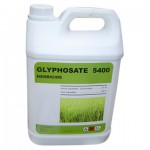 Sometimes it becomes useful or necessary to consider the use of herbicides for controlling weeds in the lawn. Other weed control methods should be employed first but when they are impractical or fail you may have to employ one. Careful, judicious use of herbacides may be preferable to creating other environmental problems associated with weeds or mechanical methods of controlling them.
Sometimes it becomes useful or necessary to consider the use of herbicides for controlling weeds in the lawn. Other weed control methods should be employed first but when they are impractical or fail you may have to employ one. Careful, judicious use of herbacides may be preferable to creating other environmental problems associated with weeds or mechanical methods of controlling them.
Herbicides may be classified in several ways but this post focuses on the ways that are valuable to the home gardener. The most familiar words you will see when reading about herbicides for lawns are pre-emergent and post-emergent. Fortunately, they are somewhat self explanatory. Pre-emergent herbicides inhibit the germination of seeds and growth of seedlings before they emerge from the soil. Post emergent herbicides kill weeds that have emerged from the soil and are actively growing in the lawn.
Pre-Emergent Herbicides
 Especially useful in eliminating annual grass weeds like crabgrass but some are also useful against broadleaf weeds
Especially useful in eliminating annual grass weeds like crabgrass but some are also useful against broadleaf weeds
 Work by inhibiting cell division in young roots
Work by inhibiting cell division in young roots
 Apply several weeks before weeds emerge from the soil. The date varies with your climate and area and may involve more than one application date so ask your county extension agent for specific information.
Apply several weeks before weeds emerge from the soil. The date varies with your climate and area and may involve more than one application date so ask your county extension agent for specific information.
 Examples include Ronstar and Pendimethalin. Siduron is less effective but is also less likely to injure desirable grass seedlings.
Examples include Ronstar and Pendimethalin. Siduron is less effective but is also less likely to injure desirable grass seedlings.
Post-Emergent Herbicides
 Especially useful in eliminating broad leaf weeds such as dandelion.
Especially useful in eliminating broad leaf weeds such as dandelion.
 They will not kill weed seeds
They will not kill weed seeds
 Best applied when weeds are actively growing, usually spring and fall.
Best applied when weeds are actively growing, usually spring and fall.
 A combination of post-emergent herbicides may be necessary to kill stubborn weeds
A combination of post-emergent herbicides may be necessary to kill stubborn weeds
 Examples include 2-4 D, MCPP, and RoundUp.
Examples include 2-4 D, MCPP, and RoundUp.
Post-emergent herbicides may be classified as contact or systemic.
 Contact Herbicides kill only the part of the plant that it touches. Many are applied to the foliage, kill the leaves, and ultimately the plant by depriving it of the food made by the leaves. An example is Finale.
Contact Herbicides kill only the part of the plant that it touches. Many are applied to the foliage, kill the leaves, and ultimately the plant by depriving it of the food made by the leaves. An example is Finale.
 Systemic herbicides are absorbed by the roots or leaves and move in the plant where it can also cause damage to the plant. They may be slower to work but are more effective against larger plans. An example is Roundup.
Systemic herbicides are absorbed by the roots or leaves and move in the plant where it can also cause damage to the plant. They may be slower to work but are more effective against larger plans. An example is Roundup.
Herbicides may also be classified as selective or non selective.
Selective herbicides
 May be pre-emergent or post-emergent.
May be pre-emergent or post-emergent.
 Kill certain weeds with minimal injury to turf grasses.
Kill certain weeds with minimal injury to turf grasses.
 Example is Green Light Betasan, a pre-emergent herbicide that controls many grasses and some broadleaves.
Example is Green Light Betasan, a pre-emergent herbicide that controls many grasses and some broadleaves.
Non-Selective Herbicides
 May be pre-emergent or post-emergent
May be pre-emergent or post-emergent
 Kill a broad range of plants
Kill a broad range of plants
 Example is RoundUp, a post-emergent herbicide that kills almost any plant.
Example is RoundUp, a post-emergent herbicide that kills almost any plant.
The best weed control is good lawn care. This means good soil preparation prior to planting, the use of turf varieties most suitable for the area, proper fertilization routine, appropriate mowing practices, adequate irrigation, and good insect and disease control. A healthy lawn is resistant to invasion by weeds and when the weeds do appear they can usually be removed mechanically. Herbicides should be considered as a last resort, and the source of the problem identified and fixed so the problem does not return.
